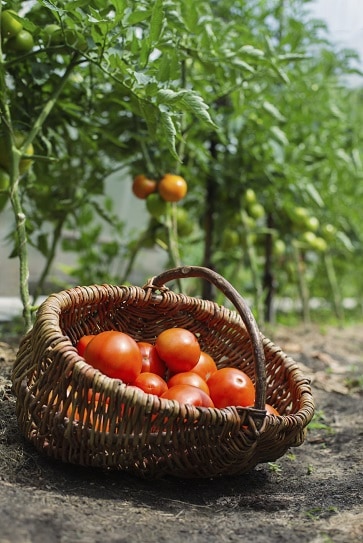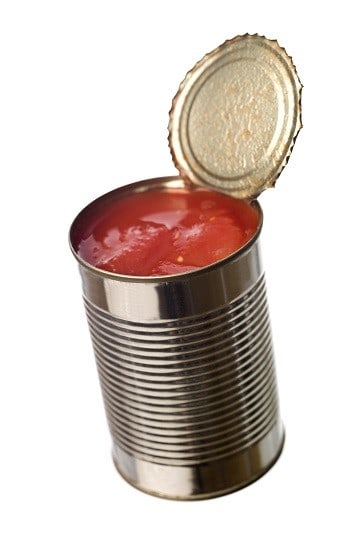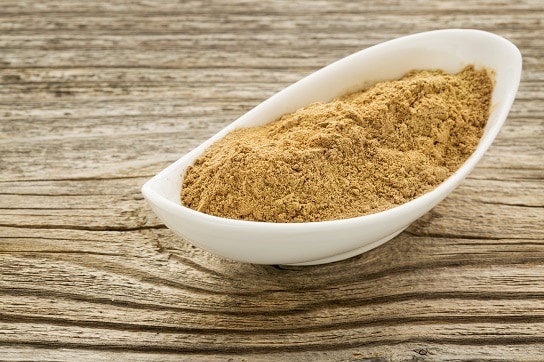 It seems to be general knowledge that tomatoes are extremely healthy and instantly can cure any woe they touch.
It seems to be general knowledge that tomatoes are extremely healthy and instantly can cure any woe they touch.
If true, it would be great news for humanity, seeing as in 2012, the average American ate 16.7 pounds yearly. Tomatoes are the most commonly consumed vegetable in the USA after white potatoes.
But there’s no doubt that as fruits and vegetables go (tomatoes are botanically a fruit, but officially a vegetable), the tomato is relatively poor for acne patients, whether you’re lowering inflammation, beating insulin resistance, unclogging pores or whatever else.
Tomatoes are a decent source of acne nutrients and antioxidants, but they pale compared to strawberries or broccoli.
Furthermore, tomatoes are a classic food for triggering acne via allergic reactions.
Why tomatoes trigger acne outbreaks
You only have to search on acne forums to find stories of sudden breakouts from tomatoes. “Tomatoes gave me cystic lesions on my chin”, “bad acne and digestive bloating”, “my face becomes flushed and I get acne within 24 hours of consumption”.
Tomatoes contain only 2.6 grams of sugar per 100 grams, no acne-causing defensive toxins like gluten, and certainly no additives from processed foods. So why is tomato sensitivity so rampant?
The answer: tomatoes are a member of the nightshade family.
Nightshades are an extremely wide family of plants across the world. Almost all are poisonous to humans; you might have travelled in a foreign country once only to have your guide instruct you to never taste that strange, bubbly red plant in the forest.
Read Annihilate Your Acne – learn to prevent acne and stop just treating it!
However, humans can stomach a few nightshades, and some species are common vegetables – bell peppers, hot peppers, white potatoes (but not sweet potatoes), eggplants, tobacco, goji berries, and tomatoes.
The problem is glycoalkaloids, natural alkaloids in nightshades which act as defensive toxins. Glycoalkaloids are essentially the nightshade’s natural pesticide – with humans among the pests to be deterred.
The history of nightshades is littered with controversy. Glycoalkaloids are famous for causing joint pain; it started when the 1940s horticulturalist Norma Childers noticed that livestock who ate woodland nightshades had a tendency to develop arthritis. He removed these nightshades and is if by magic, their joints healed. He then removed nightshades from his own diet and voila – his own arthritis disappeared.
Nowadays, joint pain doctors still recommend against eating nightshades. Why does this matter for clear skin, you might ask? Joint pain is a sign of chronic inflammation, and chronic inflammation is the root cause of acne.
The famous glycoalkaloid in potatoes is solanine, and solanine allergies are a proven phenomenon. The FDA even limits the amount of glycoalkaloids in potatoes to 200mg/kg. In this article, I concluded that the glycoalkaloids in their skin are the potato’s only real acne disadvantage.
Luckily, potato skins can be peeled off but there’s no such luck with tomatoes. The main glycoalkaloid is alpha-tomatine. Tomatine is 20 times less toxic than solanine for healthy people, but like potatoes, tomatoes routinely trigger joint stiffness and painful red rashes for no apparent reason.
The top 6 vitamins and minerals for clearing acne forever
In one study, tomatine was shown to severely damage stomach cells in sensitive people. Supposedly, pharmaceutical companies are experimenting with new vaccines which include tomatine. Why? Because it triggers a massive immune system response, also a classic hallmark of inflammation.
But do whole tomatoes increase inflammation?
 Take a look at these infield reports, which are highly indicative of inflammation:
Take a look at these infield reports, which are highly indicative of inflammation:
STORY ONE – “I completely eliminated tomatoes from my diet for a week and my arthritis went away completely. Then I tried eating lots of them and it flared up again”.
STORY TWO – “one morning, I awoke to find that I had developed severe arthritic pains in my left fore-arm and hand. I then left tomatoes off the menu, and within 2 days the pain had all but disappeared.”
STORY THREE – “tried some sliced tomato across with a small amount of skin and still I had problems the next day, including bloating, gas, and stomach pain”.
STORY FOUR – whenever one woman eats raw tomatoes she will “within a day have eczema on my fingers and the skin on my face will become red and inflamed, and will break out much worse”.
On the other hand, actual studies on tomatoes and inflammation show a different picture:
ONE – 53 obese or overweight women drank tomato juice and another 53 women drank water. The tomato juice substantially reduced inflammation after 20 days, including specific inflammatory cytokines behind acne like TNF-a, IL-6, and IL-8 (study).
TWO – conversely, a Mediterranean style tomato-rich diet had no effect on inflammation in 103 healthy people (study). Compared to a tomato free diet, pro-inflammatory chemicals like hs-CRP, E-selectin and ICAM-1 didn’t change.
Why bread and pasta are a massive cause of acne
The scientists concluded that the “benefit of the tomato-rich diet are not directly related to inhibition of… vascular inflammation”. No improvement, but no deterioration either.
For acne, it’s clear that tomatoes are not an inherent villain, but sensitivity is undeniably common.
There’s a small chance that you’ll notice random outbreaks of acne after eating tomatoes. Maybe that’s why you’re here, and if so, tomatine is almost certainly your foe.
If you notice joint pain, red rashes, or digestive discomfort after eating tomatoes, then it’s a great idea to eliminate them.
Tomatoes – the complete acne analysis
Even if you aren’t sensitive, I still don’t recommend that you place tomatoes on a pedestal above other fruits and vegetables. While surfing health websites, you might have read that “tomatoes are unmatched in the sphere of vegetables” or “tomato is a powerhouse of nutrition”. Tomatoes often get hyped up because manufacturers want to sell the lycopene antioxidants inside them as a health supplement…
However, tomatoes are not a superfood, and anyone can deduce that with a simple glance at its nutrition table:
- 100 grams of tomatoes contains 22% of RDA for vitamin C (13mg).
- 16% for vitamin A.
- 2% for magnesium.
- 7% potassium.
- 1% for calcium (10mg).
- 6% for manganese.
- 1% for zinc (0.2mg).
- 3% for vitamin E (0.5mg).
- 4% for vitamin B6.
- 3% for niacin.
- 1% for vitamin B5.
That’s pretty poor. The Vitamin C count look good initially but it’s poor in context. Strawberries, potatoes, and broccoli alone are vastly better sources.
Furthermore, the RDA of 60mg for vitamin C is far too low. You can cure acne with that amount, but to truly unleash your collagen production and strengthen your skin you need 200mg plus.
Recommended – the 7 greatest natural topical treatments for acne
The vitamin A count is decent, but sweet potatoes contain 200% of the RDA per 100 grams. They’re useless for zinc, magnesium, and also vitamin E, another acne nutrient where the RDA of 15mg is far too low.
What about antioxidants then, which are often the real standout quality of acne-friendly fruits? On the ORAC scale (oxygen radical absorbance capacity), raw tomatoes score 350-550, depending on how they’re cooked. Tomatoes have some antioxidant power, and therefore some pore-unclogging potential…
…but that score pales in comparison to tons of other foods. Pomegranate scores 10,500, apples score 4669, strawberries score 4302, and so on. Furthermore, none of them are nightshades and none are controversial for inflammation.
Does lycopene in tomatoes cure acne?
 Speaking of lycopene, you’ve probably heard how this red-tinged antioxidant is amazing at preventing cancer and lowering inflammation. Well, it is, and that’s one redeeming feature of tomatoes:
Speaking of lycopene, you’ve probably heard how this red-tinged antioxidant is amazing at preventing cancer and lowering inflammation. Well, it is, and that’s one redeeming feature of tomatoes:
ONE – 40 patients with heart failure were randomly assigned to either a lycopene supplemented diet or a standard diet. In women, though not men, lycopene substantially decreased C-reactive protein, the most commonly used bloodstream biomarker for bodily inflammation levels (study).
TWO – scientists created a tomato based drink featuring lycopene plus other tomato antioxidants. After 26 days, blood levels of the pro inflammatory chemical TNF-a fell 34.4% (study).
THREE – this review stated that lowered inflammation may be responsible for lycopene’s famous heart-protecting powers. Lycopene can apparently inhibit both inflammatory chemicals and inflammatory signalling, possibly through the inflammatory master molecule NF-KappaB.
This ever accumulating evidence is why internet retailors are flogging off lycopene pills left, right and centre.
But here’s the truth: lycopene is hardly rare. It is distributed widely across nature and tomatoes are only the third best food source.
Per 100 grams, watermelon flesh contains 4532ug, 50% more lycopene than cooked tomatoes with 3041ug. Raw tomatoes contain even less because lycopene concentrations increase when exposed to heat.
Get the eBook – learn why nuts can be either disastrous or miraculous for acne
Watermelon also rarely causes allergies and is another secret inflammation slasher. It’s loaded with natural citrulline, which converts to arginine in the body and increases nitric oxide, which accelerates the healing of your old acne.
If you want to aquire this potent antioxidant then I’d recommend eating watermelon instead. Other great sources exist too, including guavas (5204ug), papaya (1828ug), and grapefruit (1135ug).
Also, remember that many natural health websites promote lycopene not to enrich your health, but to enrich their own bank accounts. Articles you read might discuss its health benefits totally accurately, but they’re still nothing but extended advertisements.
The truth when it comes to clearing acne is that it’s pointless to isolate a single antioxidant. There are endless different phenols, flavonoids, anthocyanins, and catechins across nature, often with unique powers.
Other famous antioxidants include resveratrol in red wine, epicatechin-3-gallate in green tea, and astaxanthin in salmon, but they’re the tip of the iceberg. The acne expert eats a wide variety of fruits and vegetables to pull in thousands of varied compounds.
Sea buckthorn oil – a topical treatment which lowers oily skin by 45%
The only antioxidants you need to specifically target micronutrients with additional antioxidant functioning like vitamin C, vitamin A, and vitamin E, and self-manufactured antioxidants like glutathione and superoxide dismutase. Lycopene is great at reducing inflammation, but it’s just another antioxidant and not “a nutrient which every human being needs more of”.
Any less documented acne powers?
There’s actually one power of tomatoes which is pretty promising – lowering your blood levels of lipid peroxides, free radical derived from fat molecules.
Lipid peroxides are especially dangerous for acne since vitamin E is your main fat soluble antioxidant. Instead of being the single most important acne nutrient, vitamin E has to waste time depleting itself by deactivating them.
STUDY ONE – this 2008 study, after feeding tomato powder to Japanese quail birds, serum, muscle, and liver levels of malondialdehyde plummeted. Malondialdehyde is a lipid peroxide, and the most widely used measure of overall lipid peroxidation in the body. Blood levels of vitamin E increased too, despite tomatoes containing just 1% of the RDA. Clearly, less vitamin E was being depleted.
STUDY TWO – Jamaican scientists tested cooked tomato supplements on antioxidant and lipid peroxide levels in humans with type 2 diabetes. Again, malondialdehyde fell substantially on a long term basis. They concluded that “tomato lycopene may have considerable therapeutic potential as an antioxidant”, but it was actually the entire tomato they were using, so hidden compounds could have been responsible.
STUDY THREE – the Jamaican scientists returned to the fray, again testing cooked tomatoes but this time examining lipid peroxide levels in the short term. Once again, both lipid peroxide and malondialdehyde levels plummeted (study).
Tomatoes are nearly proven to reduce lipid peroxides and elsewhere, so is lycopene.
There’s only a smattering of antioxidants, but they’re the right ones: fat-soluble vs water-soluble, able to preserve your vitamin E (and A).
However, like most nightshades, tomatoes are also a rare vegetables which contains decent quantities of lectins, another defensive plant weapon. Lectins are sticky proteins which bind to epithelial cells in your small intestine. To dislodge them, they trigger an explosive inflammatory response, which simultaneously wreaks digestive havoc.
Why zinc supplements can reduce acne by 49.8%
Alongside gluten, lectins (specifically wheat germ agglutinin) are one reason why wheat causes such bloating, abdominal pain, and poor digestion. The acne consequences include increased food allergies, impaired digestion of nutrients like magnesium, and leaky gut syndrome.
Lectins may join tomatine in explaining the constant inflammatory reactions from tomatoes. The quantity is not enormous, but if you’re following any gut healing protocol, the type of protocol we discuss in Annihilate Your Acne, then it’s smart to keep tomatoes restricted.
To clear acne, you cannot ignore vitamin C
 The fact that tomatoes lack vitamin C is a major hit against them compared to say, broccoli or strawberries. Vitamin C is easily one of the most important nutrients for acne. You simply have to get enough, in one way or another. You have to eat plenty of fruits rich in it like pineapple or strawberries, or take a supplement to cover your bases.
The fact that tomatoes lack vitamin C is a major hit against them compared to say, broccoli or strawberries. Vitamin C is easily one of the most important nutrients for acne. You simply have to get enough, in one way or another. You have to eat plenty of fruits rich in it like pineapple or strawberries, or take a supplement to cover your bases.
For example: this study found that compared to clear-skinned patients, acne patients had an average of 40% less vitamin C in their bloodstream. That’s a pretty outstanding result.
I’ve personally noticed excellent improvements in my skin tone from taking vitamin C. My old acne marks have healed far faster and my skin has a healthy and even tone. If you’re stressed out then vitamin C is a godsend. If you have old acne scars which you need to remove then it’s better, because vitamin C builds the collagen proteins which construct new skin cells.
It’s up to you how to get the vitamin C you need for acne. Tomatoes definitely won’t do the trick, that’s guaranteed. I personally take a supplement and eat plenty of fruits and vegetables.
My preferred supplement is easily this Terrasoul Superfoods Raw Camu Camu Powder, which is manufactured from concentrated camu camu berries from Peru. It’s derived from a whole food and hence it’s very well-absorbed in the human body, not to mention chemical free.
Another natural and effective option is this Garden of Life Raw Vitamin C. Again, this supplement is food derived and free from fillers and stabilisers.
Conclusion
It’s clear that your individual bodily circumstances are absolutely critical with tomatoes. Many get raging allergies and acne, probably due to its nightshade alkaloids like tomatine, but some studies observe lower inflammation.
I would not give tomatoes a strong endorsement for any acne patient. Lowering lipid peroxides is promising, but their acne nutrients are weak and their standout compound, lycopene, can be found in watermelons.
Tomatoes don’t have any standout acne powers either. Watermelons are excellent for promoting wound healing, pomegranates lower stress levels, garlic boosts glutathione production, and cinnamon is excellent for lowering blood sugar.
Therefore, if you love the taste and versatility in cooking, and your experiences tell you that you can digest them, then you can keep tomatoes as one small puzzle piece of a wider acne-friendly diet.
If, on the other hand, you notice joint pain, fatigue and weak muscles, then tomatoes are fuelling your pimples and you should get your acne nutrition elsewhere.
Organic tomatoes are superior
If you do eat tomatoes however, then to push your acne clearing nutrition to the absolute maximum it’s a great idea to buy the organic version.
Why? Organic foods are a never-ending debate in the nutritional world right now. In 2014, a massive review from the British Journal of Nutrition showed far higher vitamin C and antioxidant levels, but in 2012 another review from Stanford stated that organic foods are a waste of money.
Tomatoes, however, are a special entity. Witness this impressive study from two years ago.
Scientists compared two batches of Brazilian tomatoes, one grown in organic fields and one grown using artificial nitrate based fertilisers and pesticides. The tomatoes were all grown in nearby farmyard plots in Brazil, providing similar soil and climatic conditions and therefore a muh more accurate comparison.
The results were very impressive: organic tomatoes contained 139% more phenolic compounds, 55% more vitamin C and 70% more yellow flavonoids and anthocyanins (a class of antioxidants). The British NHS laughed off these findings and claimed that there’s no proven translation into human health…
…but that’s being pedantic to the extreme. Dietary antioxidants are proven to be healthy for humans and their acne, so the more the better. If you’ll never abandon your beloved tomatoes, then buy the organic version.
It’s a similar story with ketchup, as organic brands were found separately to contain 57% more lycopene than conventional.
Another reason to go organic is that tomatoes are one of the most contaminated foods with pesticides. According to whatsonmyfood.com, the USDA has detected the following 35 pesticides and herbicides:
- 5 cancerous carcinogens.
- 14 hormone disruptors.
- 6 neurotoxins.
- 3 developmental or reproductive toxins.
That count includes known inflammatory pesticides like atrazine. If you want a delicious pizza for a treat then you’d better buy some organic passata and make it yourself. Judging from studies, I would estimate that roughly half of pesticides and herbicides cause either serious inflammation or serious depletion of the antioxidant glutathione.
Speaking of toxic chemicals, it’s also critical to avoid canned tomatoes. Why? Because the lining around the inside of the can is full of BPA, a monstrosity of a chemical linked to chronic inflammation. Tomatoes are highly acidic, which encourages massive leaching of the BPA into the food, and later your stomach.
It’s also a great secret that cooked tomatoes are in fact healthier than raw ones. In many foods, like honey, the delicate antioxidants are destroyed when heated, but tomatoes have their own rules. This study cooked tomatoes at 88C and found that after 2, 15, and 30 minutes…
- The content of trans-lycopene increased by 54 percent, 171 percent and 164 percent respectively.
- The content of cis-lycopene, the best absorbed form by the human body, rose by 6, 17 and 35 percent respectively.
- The overall antioxidant content increased by 28, 34 and 62 percent, respectively.
- Vitamin C levels dropped substantially, the only downside. There was no change in phenolic antioxidants or flavonoids.
Cooked tomatoes also get a slightly higher ORAC score than raw; 406 against 367. The longer you cook tomatoes the healthier they seem to become, so if you really love tomatoes, your friends are homemade meat sauces, soups, stews or other acne-friendly cooked recipes.
NEXT: read the 167 page eBook and get the ultimate diet for acne
Thanks for reading!
Hello i have had cadida treatment for along time now but it keeps coming back then am worryed about taking too many of the medication am given cos of the side effects,pls help me my whole wrist line n back pain alot I can’t even sit straight
Greetings… so is your issue the candida which is giving you so much agony, or the medication? If it’s the medication then clearly something’s wrong, although I can’t say a word since I’m not a qualified doctor. If you mean that the acne “keeps coming back” then just read this website and you’ll find loads of solutions. Start here: https://supernaturalacnetreatment.com/real-causes-of-acne/
Tomatoes can also cause acne because of their high histamine content. It seems that excess histamine can cause acne. I have a dust mite allergy and not so long ago I could literally see where my sinuses are by looking where the pimples are located. But excess histamine can come not only from allergy, but also from diet, stress or DAO deficiency.